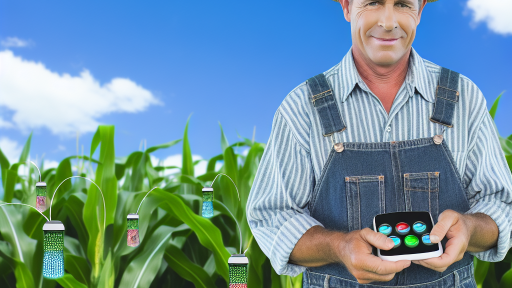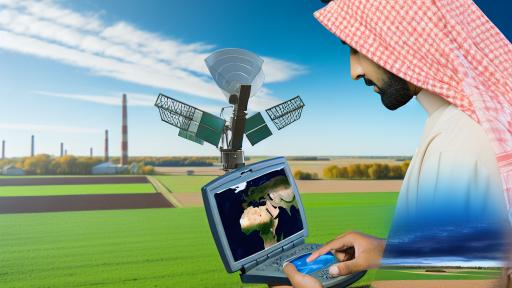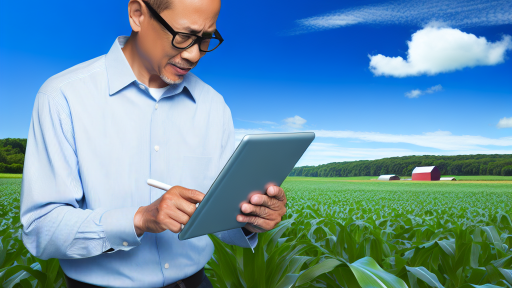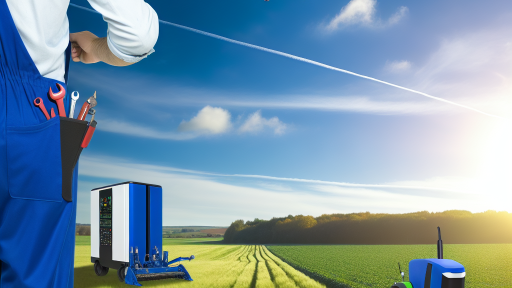Introduction to Vertical Farming and Its Importance
Defining Vertical Farming
Vertical farming refers to the practice of growing crops in stacked layers.
This method often incorporates controlled-environment agriculture technology.
It aims to optimize plant growth while reducing environmental impact.
Historical Context
The concept of vertical farming has roots in the early 20th century.
Nonetheless, it gained traction in the early 21st century due to urbanization.
Significantly, cities recognized the need to produce food locally.
Current Significance
Vertical farming plays a critical role in addressing food security.
Urban areas can significantly benefit from local food production.
Moreover, this method conserves space and resources effectively.
Environmental Benefits
One core advantage is its reduced carbon footprint.
Vertical farms utilize less water compared to traditional agriculture.
This approach minimizes soil degradation and pesticide use.
Technological Innovations
Recent innovations drive the vertical farming sector forward.
Hydroponics and aeroponics are revolutionizing crop production.
Additionally, smart farming technology enhances resource management.
Transform Your Agribusiness
Unlock your farm's potential with expert advice tailored to your needs. Get actionable steps that drive real results.
Get StartedEconomic Viability
Investing in vertical farming can yield substantial returns.
It provides opportunities in urban job creation and entrepreneurship.
Furthermore, businesses can reduce transportation costs by growing locally.
Technological Advancements in Vertical Farming Systems
Hydroponic and Aeroponic Systems
Hydroponic systems revolutionize soil-less farming.
They allow farmers to grow plants directly in nutrient-rich water.
This method boosts growth rates significantly.
On the other hand, aeroponic systems use mist to nourish roots.
This technique saves water and supports healthier plants.
LED Lighting Innovations
LED lighting enhances vertical farming productivity.
These lights provide the specific wavelengths plants need.
They reduce energy consumption, thus lowering operational costs.
Moreover, programmable systems adjust light cycles automatically.
This flexibility adapts to various crop needs effectively.
Sensors and Automation Technology
Modern vertical farms integrate advanced sensors throughout their systems.
These sensors monitor temperature, humidity, and nutrient levels.
By collecting data in real-time, farmers make informed decisions.
Additionally, automation technology streamlines workflows significantly.
These systems can manage irrigation and nutrient delivery automatically.
Data-Driven Farming Techniques
Vertical farming increasingly relies on big data.
Farmers analyze data to optimize growth conditions.
This data-driven approach identifies areas for improvement.
Using predictive analytics, farmers can anticipate potential issues.
Consequently, this strategy maximizes crop yield and quality.
Modular and Space-Efficient Designs
Today’s vertical farming systems focus on modular designs.
Showcase Your Farming Business
Publish your professional farming services profile on our blog for a one-time fee of $200 and reach a dedicated audience of farmers and agribusiness owners.
Publish Your ProfileThese designs make it easier to scale operations.
Farmers can adjust setups based on available space.
Additionally, compact systems fit well in urban environments.
This adaptability appeals to modern farmers seeking sustainable solutions.
Impact of Climate Control Technologies on Crop Yield
Introduction to Climate Control Technologies
Climate control technologies revolutionize modern agriculture.
They create optimal growing conditions for crops.
This innovation helps farmers maximize yield throughout the year.
Temperature Regulation
Maintaining the right temperature is crucial for crop growth.
Advanced HVAC systems provide precise temperature control.
These systems help in maintaining consistent conditions.
As a result, crops grow healthier and yield more produce.
Humidity Management
Humidity levels greatly affect plant growth and crop yield.
Automated systems monitor and adjust humidity levels effectively.
By optimizing humidity, farmers can reduce plant stress.
This improvement leads to increased fruit and vegetable production.
Light Optimization
Proper lighting plays a vital role in photosynthesis.
LED grow lights offer efficient and adjustable lighting solutions.
Farmers can simulate ideal day length for different crops.
With this technology, crop quality and yield improve significantly.
Water Conservation Techniques
Water management is another critical aspect of climate control.
Drip irrigation systems minimize water waste.
These systems ensure that crops receive the right amount of water.
Consequently, they enhance crop resilience during dry spells.
The Role of Monitoring Systems
Smart monitoring systems gather valuable data in real-time.
They provide insights into crops’ needs throughout their growth stages.
This knowledge allows farmers to make informed decisions.
As a result, they can fine-tune their climate control efforts.
Benefits of Advanced Climate Control
These technologies not only increase crop yields but also reduce waste.
Farmers benefit from consistent production levels year-round.
Moreover, they contribute positively to sustainability efforts.
The impact of climate control technologies is profound in modern farming.
Discover More: Maintenance Tips For Farm Robotics
Role of Hydroponics and Aeroponics in Innovations
Introduction to Hydroponics
Hydroponics revolutionizes how we grow food.
This method cultivates plants in nutrient-rich water.
It eliminates the need for soil, making it efficient.
Farmers can grow crops in controlled environments.
This allows for year-round production, regardless of external conditions.
Benefits of Hydroponics
Hydroponics offers several key advantages.
- Faster growth rates compared to traditional farming.
- Reduced water usage, conserving vital resources.
- Less land requirement, maximizing space efficiency.
- Minimized pest issues due to controlled environments.
Introduction to Aeroponics
Aeroponics takes innovation a step further.
This method grows plants in an air or mist environment.
Showcase Your Farming Business
Publish your professional farming services profile on our blog for a one-time fee of $200 and reach a dedicated audience of farmers and agribusiness owners.
Publish Your ProfileRoots remain suspended, receiving nutrients through a fine mist.
This reduces water usage while enhancing oxygen availability.
Farmers can achieve higher yields in smaller spaces.
Benefits of Aeroponics
Aeroponics provides unique benefits for modern farmers.
- Higher nutrient absorption rates, promoting growth.
- Less water waste, making it an eco-friendly option.
- No soil-borne diseases, reducing crop loss.
- Complete control over nutrient delivery and pH levels.
Combining Hydroponics and Aeroponics
Many innovative farms integrate hydroponics and aeroponics.
This combination maximizes efficiency and production.
Farmers can tailor systems to specific crop needs.
As a result, they achieve optimal growth and resource usage.
Real-World Applications
Several companies lead the way in these farming techniques.
GreenSky Farms implements both systems effectively.
Their modular design allows for scalable farming solutions.
CropWave Innovations focuses on urban environments.
They develop vertical farms using hydroponics and aeroponics.
The Future of Hydroponics and Aeroponics
The future looks promising for these farming methods.
Technological advancements will improve efficiency further.
As urbanization increases, demand for innovative solutions grows.
Hydroponics and aeroponics will play crucial roles in sustainable agriculture.
Farmers worldwide can embrace these innovations for better food security.
Learn More: Automated Machinery Solutions for Small Farmers
Integration of AI and Data Analytics in Farming Operations
Harnessing Artificial Intelligence
Artificial Intelligence (AI) revolutionizes farming practices today.
Farmers use AI to predict yields and optimize planting schedules.
This technology analyzes historical data for better decision-making.
Consequently, farmers can reduce waste and improve efficiency.
Role of Data Analytics
Data analytics plays a crucial role in modern agriculture.
Farmers collect data from various sources, such as sensors and drones.
They analyze this data to identify trends and patterns in crop performance.
This analysis helps in making informed decisions for future planting.
Improving Crop Monitoring
AI-driven tools enhance crop monitoring capabilities significantly.
Farmers receive real-time insights into crop health using these tools.
They can quickly address issues such as pests or diseases.
This timely response can lead to better yields and quality produce.
Efficient Resource Management
Resource management becomes more efficient through AI integration.
Farmers can optimize water usage with AI-driven irrigation systems.
This reduces water waste and promotes sustainable practices.
In addition, AI helps manage fertilizer applications based on real needs.
Forecasting and Planning
Accurate forecasting is vital for successful farming operations.
AI analyzes weather data to provide reliable forecasts.
This information assists farmers in adapting their strategies accordingly.
As a result, they can maximize their output and minimize losses.
Enhancing Supply Chain Efficiency
AI also improves supply chain management for farmers.
Showcase Your Farming Business
Publish your professional farming services profile on our blog for a one-time fee of $200 and reach a dedicated audience of farmers and agribusiness owners.
Publish Your ProfileData analytics helps track products from farm to market effectively.
This transparency increases trust and reduces spoilage during transport.
Farmers can respond swiftly to market changes, enhancing profitability.
Delve into the Subject: Choosing the Right Automated Equipment for Your Farm
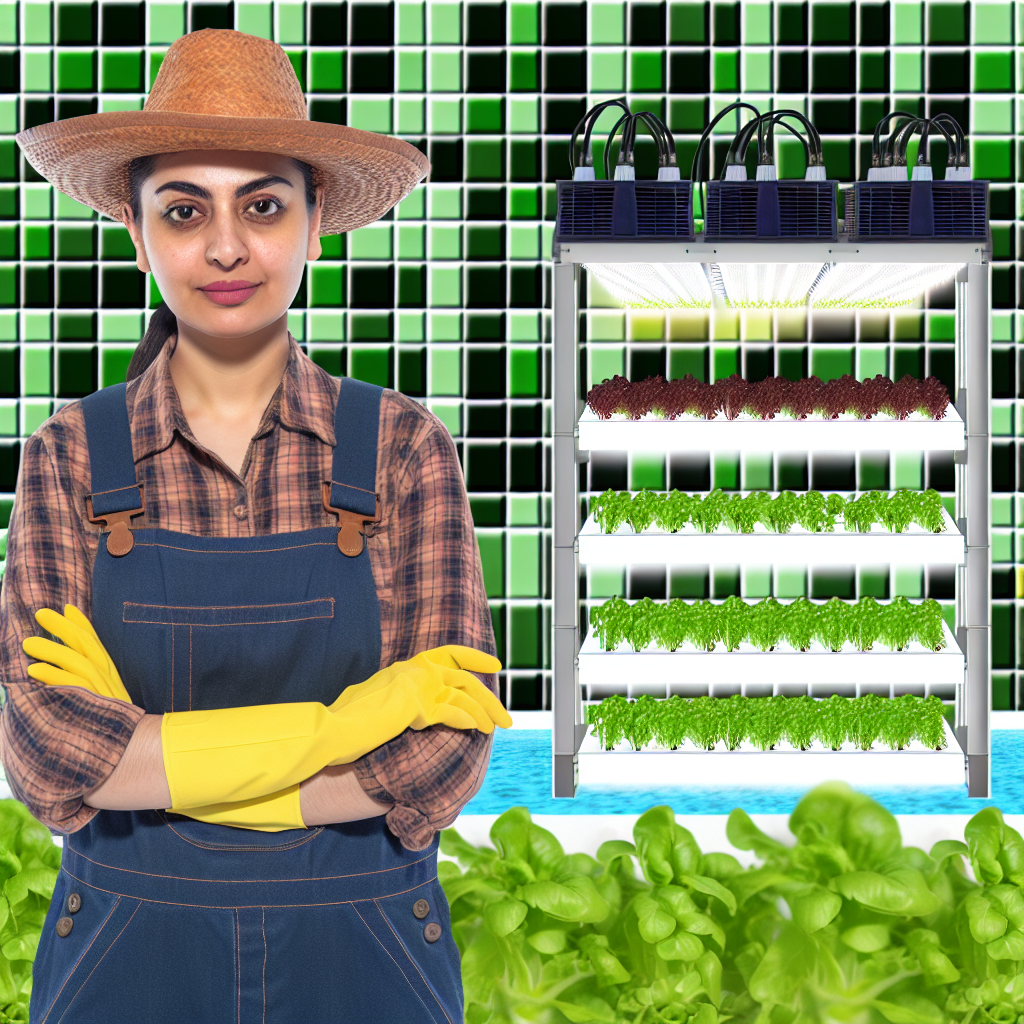
Sustainability Practices in Vertical Farming Innovations
Resource Efficiency
Vertical farming optimizes land use more effectively than traditional farming.
This method uses significantly less water compared to conventional agriculture.
Additionally, it minimizes the need for harmful pesticides and fertilizers.
Soil usage is limited, allowing for clean, soilless alternatives like hydroponics.
Energy Conservation
Energy-efficient LED lights transform how crops grow indoors.
These lights reduce energy costs while maximizing light absorption.
Moreover, innovative technologies harness renewable energy sources.
Farmers now utilize solar panels to power their vertical farms.
Waste Reduction
Vertical farming practices focus on minimizing waste generation.
Several farms implement composting to recycle organic material effectively.
Technology aids in achieving zero waste by repurposing byproducts.
Farmers produce sustainable packaging to reduce landfill contributions.
Water Recycling Systems
Closed-loop water systems enhance sustainability in vertical farming.
These systems filter and reuse water to maximize efficiency.
Farmers ensure minimal water loss while maintaining optimal plant health.
Consequently, vertical farms demonstrate incredible water conservation capabilities.
Climate Control Technologies
Advanced climate control systems regulate temperature and humidity levels.
This technology enables year-round crop production regardless of external conditions.
Climate control minimizes resource consumption while maximizing crop yield.
Farmers can also simulate seasonal conditions to grow diverse plants.
Community Engagement and Education
Vertical farms actively engage with communities to share knowledge.
Workshops educate local farmers about sustainable practices.
By fostering collaboration, they contribute to wider agricultural improvements.
Community-supported agriculture models enhance access to fresh produce.
Gain More Insights: Monitoring Soil Health Using Remote Sensing
Case Studies of Successful Vertical Farms Around the World
Farm One in New York City
Farm One operates in a small indoor space in Manhattan.
This vertical farm grows a diverse array of herbs and greens.
Utilizing innovative hydroponic techniques, they ensure efficiency.
The farm has a focus on sustainability and local sourcing.
Additionally, they host workshops to promote urban farming.
AeroFarms in Newark
AeroFarms is a pioneer in the vertical farming industry.
They leverage aeroponic technology to maximize crop yield.
This method uses mist instead of soil to grow plants.
Moreover, AeroFarms uses 95% less water than traditional farming.
They supply fresh produce to local grocery stores and restaurants.
Plenty in San Francisco
Plenty operates high-tech vertical farms with advanced robotics.
Showcase Your Farming Business
Publish your professional farming services profile on our blog for a one-time fee of $200 and reach a dedicated audience of farmers and agribusiness owners.
Publish Your ProfileTheir systems use machine learning for optimized growth conditions.
They produce a variety of vegetables year-round indoors.
This approach minimizes space and maximizes output.
Furthermore, Plenty aims to reduce food miles significantly.
Gotham Greens in Chicago
Gotham Greens manages greenhouses atop urban buildings.
They provide fresh produce while reducing transportation emissions.
Each greenhouse is designed to be energy efficient.
Moreover, they partner with local markets to distribute their products.
This model contributes to urban sustainability efforts.
Vertical Harvest in Wyoming
Vertical Harvest combines agricultural production with community support.
This farm employs individuals with disabilities in meaningful jobs.
They grow fresh produce for local markets throughout the year.
Additionally, they emphasize social sustainability alongside environmental practices.
This unique model benefits both the community and the environment.
Square Roots in Brooklyn
Square Roots focuses on empowering farmers through technology.
They offer an incubator program for aspiring urban farmers.
Participants receive support and resources to launch their farms.
This initiative encourages local food production and innovation.
In addition, they aim to build a community around farming education.
Future Trends and Predictions for Vertical Farming Innovations
Advancements in Technology
Vertical farming will benefit from cutting-edge technologies in the near future.
New sensors will monitor plant health more accurately than ever.
Automation will streamline planting, watering, and harvesting processes.
Furthermore, artificial intelligence will optimize growing conditions.
These technologies will create more efficient systems for farmers.
Enhanced Crop Diversity
Farmers will increasingly grow diverse crops in vertical farms.
Vertical farming systems will enable the cultivation of exotic plants.
This diversification will cater to changing consumer preferences.
Additionally, it will improve overall yield and profitability.
Environmental Sustainability
The future of vertical farming is closely tied to sustainability efforts.
Innovations will reduce water usage significantly in farming practices.
Furthermore, vertical farms will rely on renewable energy sources.
These practices will minimize carbon footprints and environmental impacts.
Integration with Urban Development
Urban areas will increasingly embrace vertical farming innovations.
These farms will utilize underused spaces in urban environments.
Integrating agriculture into cities will enhance food security.
Moreover, it will foster community engagement in local food production.
Economic Opportunities
The rise of vertical farming will create new economic opportunities.
Job creation in technology, agriculture, and logistics will increase.
Small and medium-sized enterprises will flourish in this sector.
Additionally, urban vertical farms will stimulate local economies.
Showcase Your Farming Business
Publish your professional farming services profile on our blog for a one-time fee of $200 and reach a dedicated audience of farmers and agribusiness owners.
Publish Your ProfileHealth and Nutrition Focus
Future vertical farming will emphasize health and nutrition.
Farmers will cater to health-conscious consumers’ rising demands.
Expect to see increased availability of organic and nutrient-rich produce.
This focus will shift consumer habits toward healthier food choices.
Additional Resources
New Agriculture Technology in Modern Farming
Precision Agriculture: Benefits and Challenges for Technology …

